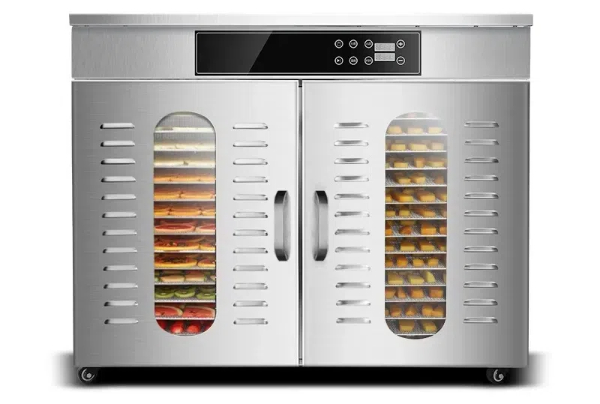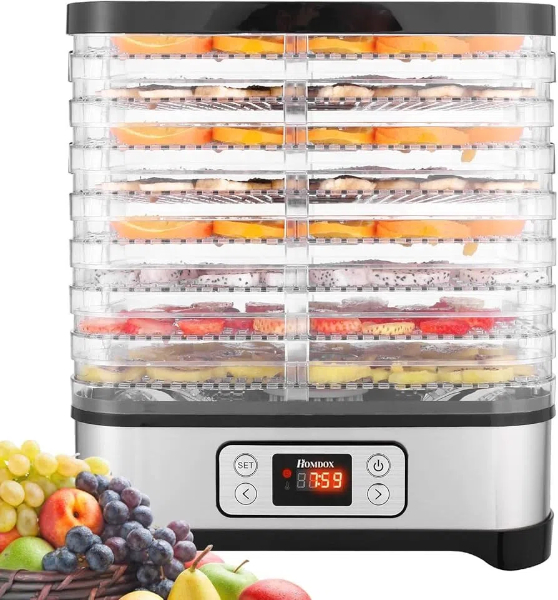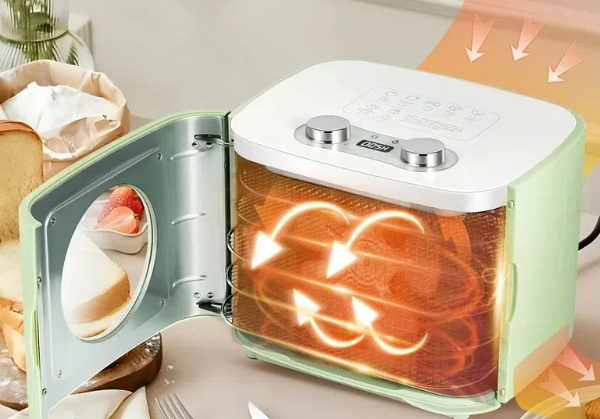
Content Menu
● Introduction
● What is Temperature Control Drying?
>> Methods of Temperature Control Drying
● Benefits of Precise Temperature Control
● Potential Issues of Inadequate Temperature Control
● Types of Food Drying Machines with Temperature Control
● Factors Affecting Temperature Control
● Advanced Temperature Control Technologies
● Troubleshooting Temperature Control Issues
● Emerging Trends in Temperature Control Drying
● Conclusion
● FAQ
>> 1. What is the ideal temperature range for drying fruits?
>> 2. How does humidity affect temperature control in drying?
>> 3. What are the key components of a temperature control system in a food drying machine?
>> 4. How often should temperature control systems be calibrated?
>> 5. Can temperature control help reduce energy consumption in food drying?
● Citations:
Introduction
Drying is a critical process in food preservation, extending shelf life, reducing transportation costs, and enhancing flavor concentration. However, the effectiveness and quality of the drying process hinge significantly on temperature control. This article explores the importance of precise temperature management in food drying, the various methods employed, the benefits of temperature control, potential issues, and frequently asked questions. We aim to provide valuable insights for food drying machine brand owners, wholesalers, manufacturers, and OEM service providers in China and beyond.

What is Temperature Control Drying?
Temperature control drying refers to drying methods that carefully regulate temperature to efficiently and effectively remove moisture from materials or products. These methods are employed across diverse industries, including food processing, pharmaceuticals, and textiles. The specific temperatures and drying times are tailored to the unique characteristics of each product, ensuring optimal results.
Methods of Temperature Control Drying
Several temperature control drying methods exist, each with unique features:
- Convective Drying: This method uses hot air to eliminate moisture. Air temperature and flow rates are controlled to optimize drying. Convective drying is widely used due to its simplicity and cost-effectiveness, making it suitable for drying a wide range of products from fruits and vegetables to grains and meats. Proper temperature control is essential in convective drying to prevent issues like surface hardening or uneven drying.
- Infrared Drying: Infrared radiation heats materials directly for faster, more consistent drying. Temperature control prevents overheating and damage. Infrared drying offers the advantage of rapid and efficient heating by directly transferring energy to the product, reducing the risk of thermal degradation when compared to traditional methods.
- Freeze Drying: Materials are frozen, and a vacuum removes frozen moisture. Temperature control is essential during freezing and sublimation to maintain the material's structure. Freeze drying is particularly effective for preserving heat-sensitive materials, as the low-temperature environment minimizes the risk of denaturation and maintains the product's original flavor, aroma, and nutritional content.
- Vacuum Drying: Pressure and temperature are managed to evaporate moisture under reduced pressure, suitable for heat-sensitive materials. Vacuum drying is an excellent choice for products that are prone to oxidation or degradation at higher temperatures. The reduced pressure environment lowers the boiling point of water, allowing moisture to evaporate at lower temperatures while preserving the product's integrity.
- Microwave Drying: Microwave radiation heats materials to remove moisture. Precise temperature control is crucial to avoid localized overheating and ensure uniform drying. Microwave drying offers the benefit of rapid and selective heating, as microwaves penetrate the material and directly target water molecules. However, temperature control is crucial to prevent localized overheating and ensure that the product is dried uniformly.
- Heat Pump Drying: This method absorbs heat from the surroundings and transfers it to the materials being dried, offering precise temperature control and energy efficiency. Heat pump drying is becoming increasingly popular due to its energy-efficient nature and ability to recycle heat. The closed-loop system allows for precise control over temperature and humidity, making it suitable for drying a wide range of products while minimizing energy consumption and environmental impact.
Benefits of Precise Temperature Control
Precise temperature control offers numerous benefits in food drying:
- Enhanced Product Quality: Prevents overheating, which can cause discoloration, case hardening, and loss of essential nutrients and flavors. By maintaining the optimal temperature range, the product's texture, color, and flavor profile can be preserved, resulting in a higher-quality dried product.
- Energy Efficiency: Optimizes the drying process, reducing energy consumption and operational costs. Precise temperature control prevents over-drying or under-drying, minimizing energy waste and reducing operational costs. This can lead to significant savings over time, especially for large-scale drying operations.
- Uniform Drying: Ensures consistent moisture removal, preventing spoilage and maintaining the desired texture and appearance. Uniform drying reduces the risk of microbial growth and enzymatic activity, which can lead to spoilage. It also ensures that the product has a consistent texture and appearance, which is essential for consumer acceptance.
- Preservation of Nutrients: Protects heat-sensitive vitamins, enzymes, and antioxidants, retaining the nutritional value of the dried food. By using lower temperatures and precise temperature control, the degradation of nutrients can be minimized, preserving the health benefits of the dried food.
- Extended Shelf Life: Minimizes moisture content, inhibiting microbial growth and enzymatic activity, thus prolonging the product's shelf life. By reducing the moisture content to a level that inhibits microbial growth, the dried product can be stored for extended periods without spoilage.
| Drying Method | Temperature Control Capability | Advantages | Disadvantages |
| Convective | Moderate | Simple, cost-effective, suitable for various products | Can cause case hardening, nutrient loss if not controlled properly |
| Infrared | High | Rapid drying, uniform heating, energy-efficient | May not be suitable for thick or irregularly shaped items |
| Freeze | Very High | Excellent preservation of flavor, color, and nutrients | High initial cost, slow process |
| Vacuum | High | Gentle drying, preserves heat-sensitive compounds | Higher equipment costs, batch process |
| Microwave | High | Fast drying, energy-efficient, can reduce microbial load | Potential for uneven heating, requires careful control |
| Heat Pump | Very High | Energy-efficient, precise control over temperature and humidity, suitable for heat-sensitive materials, multiple modes (drying, dehumidifying, cooling) | Higher initial investment, may require specialized technical knowledge for maintenance |
Potential Issues of Inadequate Temperature Control
Failing to maintain precise temperature control can lead to several problems:
- Case Hardening: Rapid surface drying forms a hard outer layer, trapping moisture inside and leading to spoilage. This occurs when the surface of the food dries too quickly, forming a barrier that prevents moisture from escaping the interior.
- Discoloration: High temperatures can cause browning or darkening, affecting the product's visual appeal. Excessive heat can lead to Maillard reactions and caramelization, altering the color and flavor of the food.
- Nutrient Loss: Heat-sensitive vitamins and enzymes can degrade, reducing the nutritional value. Vitamins like Vitamin C and enzymes are particularly susceptible to heat damage, which can reduce their effectiveness.
- Uneven Drying: Inconsistent temperatures result in some areas being over-dried while others remain moist, promoting microbial growth. This can lead to localized spoilage and reduce the overall quality of the dried product.
- Reduced Shelf Life: Inadequate drying leads to higher moisture content, accelerating spoilage and reducing the product's marketability. Higher moisture content creates a favorable environment for microbial growth, leading to faster spoilage and reduced shelf life.

Types of Food Drying Machines with Temperature Control
Several types of food drying machines incorporate temperature control systems to optimize the drying process:
1. Cabinet Dryers: These batch dryers are suitable for small to medium-scale operations, offering precise temperature control and uniform airflow. Cabinet dryers are commonly used for drying herbs, spices, and small batches of fruits and vegetables.
2. Tunnel Dryers: Ideal for continuous processing, tunnel dryers move products through different temperature zones, ensuring consistent drying. Tunnel dryers are often used for large-scale drying of fruits, vegetables, and snack foods.
3. Belt Conveyor Dryers: Used for drying granular or particulate materials, these dryers provide consistent temperature control and efficient moisture removal. Belt conveyor dryers are suitable for drying grains, seeds, and dehydrated vegetables.
4. Fluid Bed Dryers: These dryers suspend food particles in an air stream, providing uniform drying and precise temperature control, suitable for heat-sensitive materials. Fluid bed dryers are commonly used for drying pharmaceutical ingredients and fine powders.
5. Heat Pump Dryers: Utilizing a reversed Carnot principle, these dryers absorb heat and circulate it, offering precise temperature control, energy efficiency, and multiple modes for drying, dehumidifying, and cooling. Heat pump dryers are increasingly used for various food products, including fruits, vegetables, and herbs.
6. Vacuum Dryers: Operate under reduced pressure and carefully controlled temperatures to gently remove moisture, making them ideal for preserving heat-sensitive substances. Vacuum dryers are often used in the pharmaceutical and food industries for drying delicate materials.
7. Infrared Dryers: Use infrared radiation to heat substances directly, offering rapid drying with precise temperature control to prevent damage. Infrared dryers are employed for various applications, including drying coatings, films, and thin layers of materials.
8. Microwave Dryers: Employ microwaves to heat substances, requiring careful temperature control to prevent overheating and ensure even drying. Microwave dryers are utilized in the food and pharmaceutical sectors for tasks like sterilization, drying, and heating.
[Include a product video showcasing a heat pump dryer and its temperature control features.]
Factors Affecting Temperature Control
Several factors influence temperature control in drying processes:
- Air Velocity: Adjusting air velocity affects heat transfer and moisture removal rates. Higher air velocity can accelerate drying but may also lead to case hardening.
- Humidity: Controlling humidity levels prevents case hardening and ensures uniform drying. Lower humidity enhances drying, while higher humidity slows it down.
- Product Load: Overloading trays can block airflow, leading to uneven drying and temperature fluctuations. Proper spacing between products is essential for uniform drying.
- Equipment Calibration: Regularly calibrating sensors and controllers ensures accurate temperature control. Calibration should be performed periodically to ensure reliable readings.
- Environmental Conditions: Ambient temperature and humidity can impact the drying process, requiring adjustments to temperature control settings. Changes in environmental conditions can affect drying efficiency.
- Type of Food: Different foods have different optimal drying temperatures; understanding these is critical for effective temperature control. Different food products require specific temperature profiles for optimal results.
Advanced Temperature Control Technologies
Advanced technologies enhance temperature control in modern food drying machines:
- PLC (Programmable Logic Controllers): Enable precise and automated temperature control based on pre-set programs. PLCs allow for customized drying profiles tailored to specific products.
- Touch Screen Interfaces: Provide user-friendly interfaces for monitoring and adjusting temperature settings. Touchscreen interfaces simplify operation and provide real-time feedback on drying parameters.
- Digital Sensors: Offer accurate temperature readings and feedback for precise control. Digital sensors ensure accurate measurements and reliable performance.
- Variable Frequency Drives (VFDs): Allow precise control of fan speeds, optimizing airflow and temperature control. VFDs enable energy-efficient operation and fine-tuning of airflow.
- Automated Dampers: Regulate airflow and humidity levels for consistent drying conditions. Automated dampers maintain optimal drying conditions by adjusting airflow and humidity levels.
Troubleshooting Temperature Control Issues
Common issues and their solutions:
1. High-Pressure Protection:
- Cause: Hot air circulating fans not working.
Solution: Check power source, fan connections, and replace damaged fans.
- Cause: Overloaded trays blocking airflow.
Solution: Reduce product load and ensure proper spacing between trays.
- Cause: Electronic expansion valve malfunction.
Solution: Adjust or replace the valve.
- Cause: Chamber temperature too high.
Solution: Lower the temperature settings.
- Cause: Incorrect refrigerant.
Solution: Refill with the correct high-temperature refrigerant.
2. Low-Pressure Protection:
- Cause: Gas leak.
Solution: Check and repair leak points.
- Cause: Cold weather affecting gas pressure.
Solution: Extend check time or use low-temperature gas.
- Cause: Electronic expansion valve opening too small.
Solution: Adjust the valve to a larger opening.
3. Exhaust Temperature Too High:
- Cause: Gas leak.
Solution: Check and repair leak points.
- Cause: Electronic expansion valve malfunction.
Solution: Replace or adjust the valve.
4. Temperature Sensor Error:
Solution: Replace the faulty sensor.
5. Slow or No Moisture Discharge:
- Cause: Damaged dehumidify fan.
Solution: Replace the fan.
- Cause: Controller malfunction.
Solution: Check and reset the controller.
Emerging Trends in Temperature Control Drying
Several emerging trends are shaping the future of temperature control in food drying:
- AI-Powered Control Systems: Artificial intelligence (AI) and machine learning (ML) are being integrated into drying systems to optimize temperature control based on real-time data. These systems can learn from past drying cycles and adjust parameters to maximize efficiency and product quality.
- IoT-Enabled Monitoring: The Internet of Things (IoT) enables remote monitoring and control of drying processes. Sensors collect data on temperature, humidity, and airflow, which can be accessed and analyzed remotely to ensure optimal performance and detect potential issues.
- Sustainable Drying Solutions: There is a growing focus on developing more sustainable drying technologies that reduce energy consumption and environmental impact. Heat pump dryers, solar dryers, and hybrid systems are gaining popularity as eco-friendly alternatives to traditional drying methods.
- Nanotechnology Applications: Nanotechnology is being explored for enhancing heat transfer and moisture removal in drying processes. Nanomaterials can be used to create coatings that improve heat conduction and reduce energy consumption.
- Hybrid Drying Systems: Combining different drying methods, such as convective and microwave drying, can leverage the strengths of each technique. Hybrid systems offer faster drying rates, improved product quality, and reduced energy consumption.
Conclusion
Temperature control is paramount in food drying processes, significantly influencing product quality, energy efficiency, and shelf life. By understanding and implementing precise temperature control methods, food drying machine manufacturers and users can optimize their processes, reduce waste, and deliver superior products. Advanced technologies and diligent maintenance further enhance the effectiveness of temperature control, ensuring consistent and reliable drying results. The emerging trends discussed will continue to refine and improve temperature control, making food drying more efficient, sustainable, and intelligent.

FAQ
1. What is the ideal temperature range for drying fruits?
The ideal temperature range for drying fruits typically falls between 50°C and 70°C (122°F and 158°F). However, specific temperatures vary depending on the type of fruit. For example, berries and delicate fruits require lower temperatures to prevent scorching, while denser fruits like apples can withstand slightly higher temperatures.
2. How does humidity affect temperature control in drying?
Humidity plays a critical role in temperature control because it affects the rate of moisture removal. High humidity slows down drying, requiring higher temperatures, which can damage the product. Low humidity accelerates drying but can cause case hardening. Maintaining optimal humidity levels is essential for efficient and uniform drying.
3. What are the key components of a temperature control system in a food drying machine?
The key components include:
- Temperature Sensors: Accurately measure the air and product temperatures.
- Controllers: Process sensor data and adjust heating elements or airflow.
- Heating Elements: Provide the necessary heat for drying.
- Air Circulation System: Ensures uniform temperature distribution.
- Dampers: Regulate airflow and humidity levels.
4. How often should temperature control systems be calibrated?
Temperature control systems should be calibrated at least every six months, or more frequently if there are noticeable inconsistencies in drying performance. Regular calibration ensures accurate temperature readings and optimal drying conditions.
5. Can temperature control help reduce energy consumption in food drying?
Yes, precise temperature control can significantly reduce energy consumption. By optimizing temperature and airflow, the drying process becomes more efficient, reducing the time and energy needed to achieve the desired moisture content.
Citations:
[1] https://drytechdryer.en.made-in-china.com/product/MFqfIyeKEnRz/China-Multiple-Temperature-Control-Dehydrator-Machine-Food-Fruit-Drying-System-Vegetable-Seed-Heat-Pump-Dryer.html
[2] https://www.classace.io/answers/explain-temperature-control-drying-methods
[3] https://patents.google.com/patent/CN110207480A/zh
[4] https://fsdalle.en.made-in-china.com/product/iOMGNFrvlEfd/China-Independent-Temperature-Control-Nutrition-Smart-Drying-Machine.html
[5] https://www.matec-conferences.org/articles/matecconf/pdf/2016/28/matecconf_icnscm2016_03002.pdf
[6] https://patents.google.com/patent/CN201919616U/zh
[7] https://www.alibaba.com/product-detail/RAF-Big-Capacity-5-Layers-Temperature_1601125153221.html
[8] https://www.researchgate.net/publication/304997045_Temperature_Control_of_Heating_Zone_for_Drying_Process_Effect_of_Air_Velocity_Change
[9] https://www.x-mol.com/paper/1308551584547049472/t











